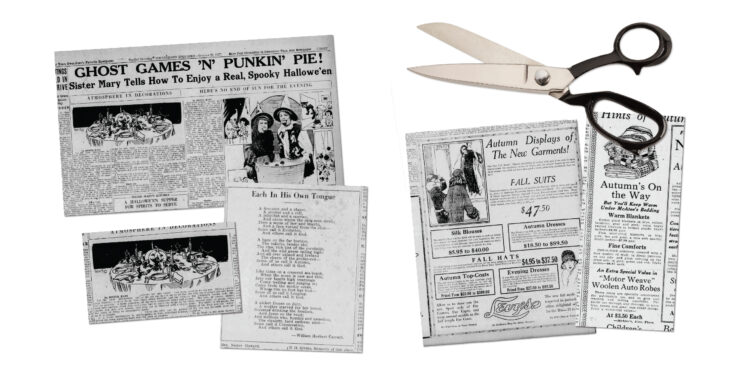One hundred autumn seasons have come and gone since 1923, yet the spirit of this bright and beautiful and blustery and bleak season is as enduring as ever.
One need look no further than the pages of the local newspapers, from a time in which writers were not shy about expressing their feelings with words of poetry.
A verse credited to William Herbert Carruth, published in the Oct. 28, 1923, edition of the Messenger-Inquirer includes the following stanza:
“A haze on the far horizon,
The infinite, tender sky,
The ripe, rich tint of the cornfields,
And the wild geese sailing high;
And all over the upland and lowland
The charm of the golden-rod –
Some of us call it Autumn,
And others call it God.”
Another article, featured in the Oct. 12 issue, explores the beauty of “Nature’s Philosophy,” observing “The seasons have again brought autumn around – autumn with its fulfillment of the promises of spring and summer in harvests of field and forest. And now, with its rustle of falling leaves, with its wind gusts that hint of chilling blasts to come, it sounds last call for outdoor sports. With its sparkling sunshine, its crimsoned and purpled forests, its gold-carpeted fields, autumn beckons one and all to go out and play.”
Going out to play is all well and good, but of course, one must be dressed accordingly! Not to worry; the Nanz Clothing Co. offered a fabulous selection of “Coats for Fall,” some with fur collars and cuffs, in prices ranging from $12.50 to $85.
Not to be outdone, Levy’s advertised fall suits for $47.50 – with trimmings of “Viatka squirrel, natural squirrel, beaver, fox and many other furs.”
Owensboro’s ladies needn’t have worried that autumn rains might spoil their style. McAtee, Lyddane and Ray were there to save the day, offering autumn umbrellas that promised to “add to one’s personal costume and make a gray world a gay one.”
And while the shopper was at McAtee’s, she might as well pick up a woolen auto robe, constructed especially for automobile use with a “motor weave.”
Nature and shopping aside, one of the best things about autumn is the opportunity to throw a party! Whether for Hallowe’en or “just because,” Sister Mary was there to help, with an Oct. 28, 1923, article in the Owensboro Inquirer featuring everything the hostess with the ghostest mostest needed to know!
She must first set the atmosphere with seasonal decorations. “A large pumpkin, used bowl fashion, filled with rosy apples and nuts and grapes, has the merit of being as inexpensive as it is artistic,” Sister Mary said. Carrots, turnips, apples, potatoes and cabbages could be carved or hollowed out to serve as candle holders, and, of course, “jolly little round pumpkin-yellow cakes with a surprise in the center are vastly more fun than the most elaborate of crackers.”
Guests were sure to enjoy activities such as apple bobbing, fortune-telling and ghost stories.
Thanks to festivities such as these, the words of an anonymous author published on Oct. 31, 1923, ring especially true – as true now as then:
“Have the poets been quite fair to autumn in associating it with old age and ‘melancholy days’? Why should the harvest time be the saddest days of the year when there is nothing more satisfying than achievement of which the harvest is symbolical, nothing more dazzling beautiful than autumn leaves and sunsets, and nothing more invigorating and rejuvenating than autumn air, sunshine and frosts?”
It’s a fair question.
We shall close with the concluding words of that same article from 100 years ago: “Let her coming remind all, who liken their years to her moods, that autumn and old age are the climax of the book and they ‘live happily ever after.’”
May it ever be so, in all the seasons to come. OL










